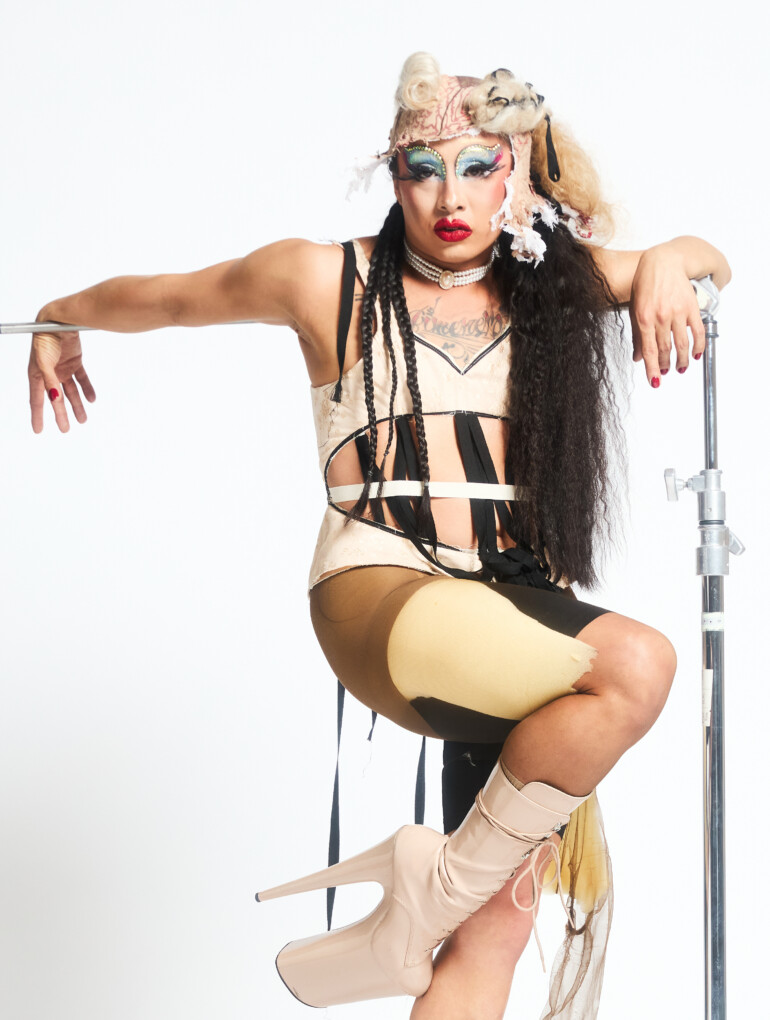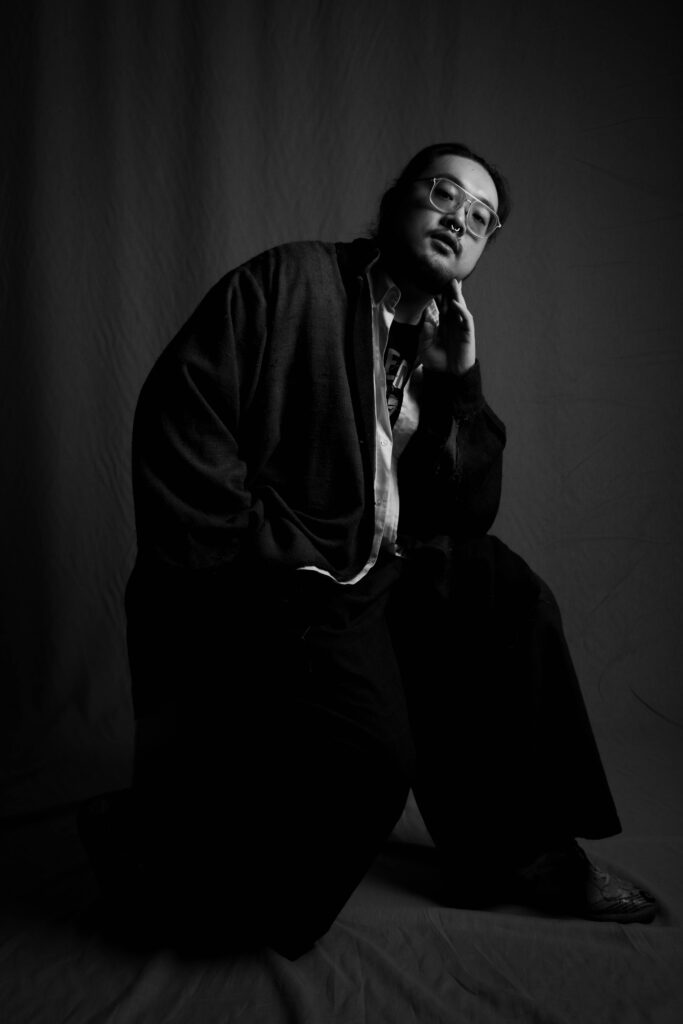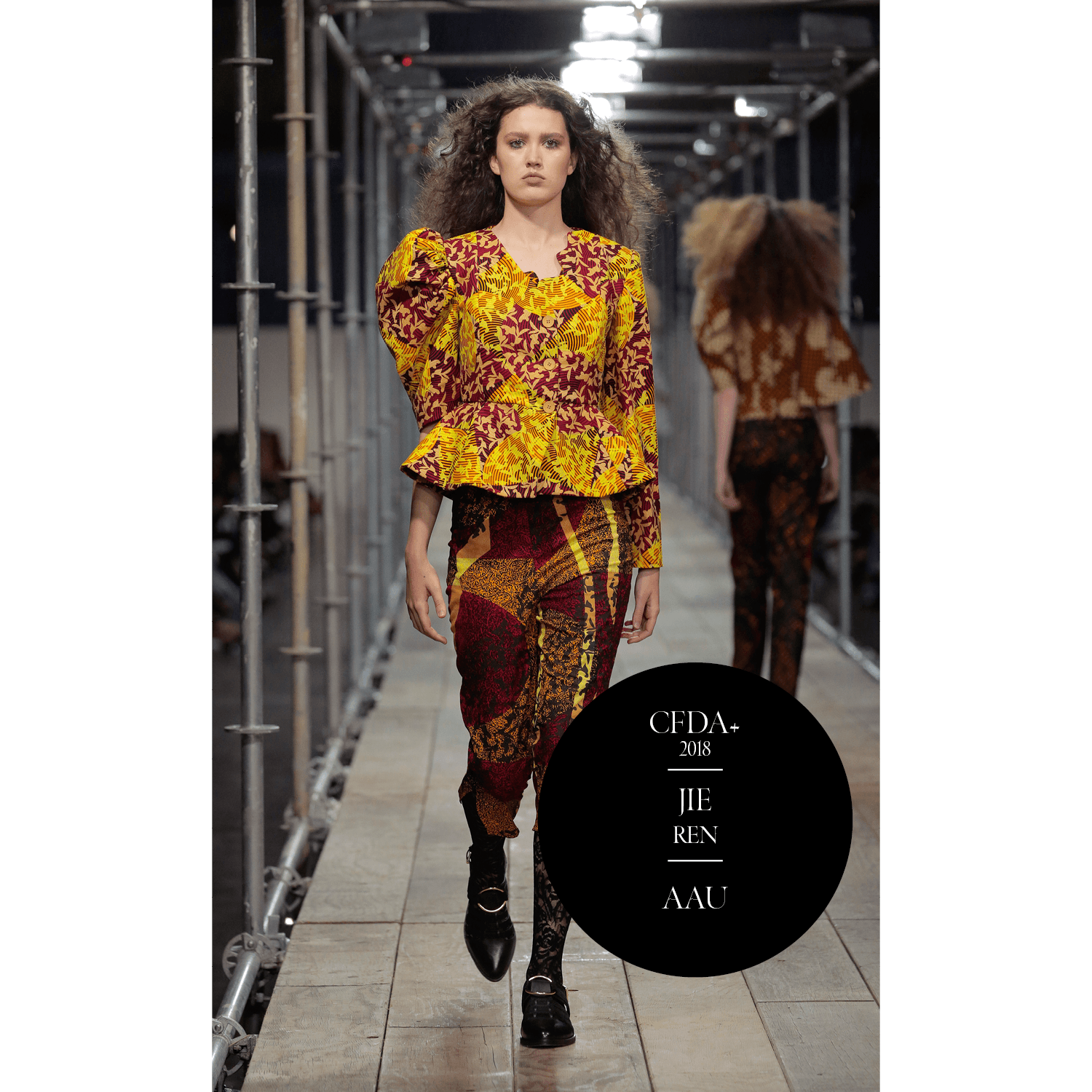Building a Story
Patric Yikun Wang, M.F.A. Costume Design, celebrates drag and the art of transformation in his thesis collection. Like the drag scene he’s inspired by, Wang is resourceful and resilient, using his intuition to craft corsets and padding.
When asked about the difficulties of turning from the discipline of costume to fashion, Wang confidently responded, “Fashion and costume are not that different. They use the same language, they just tell different stories.”
Born in the conservative corner of Jilin, China, Wang faced the harsh reality of being queer. This experience, paired with his love for performance art, has informed his oeuvre during his time at Academy of Art University. He explores the queer experience, his battles with body image, and himself through his art.
Rather than approaching creation with new, shiny textiles, Wang explores how used materials create a story and memory, especially in the wigs that accompany the hip pads and corset ensembles. Through stacking and teasing wigs, he creates giant, structured wigs to work as companions to his garments.
His thesis tells a story down to the padding using condoms to allude to the AIDS epidemic of the 1980s and makeup remover wipes, partly inspired by the Queen of Filth, Divine, and her ability to balance glamour with grotesque imagery. In his free time, the artist watches documentaries and videos on the art of drag, recalling the resourcefulness of queens on a budget, and using household items like beans to build the silhouette of a bosom.

“Before I even wanted to make this into a fashion collection, I was inspired by the body-building part,” explained Wang. “I was just thinking if I can use all these scraps and all these things around the queer community, like condoms, which are associated with AIDS and pills. If I can just make all that into a body shape and padding, it would be amazing. We can have so much information and messages just in the garment itself. I think it’s meaningful and interesting to see.”
Rather than taking the traditional approach to actively buying supplies that designers tend to take, Wang’s process involves creating abstract padding to turn the underpinnings into the main attraction. By taking thick, sponge foam and putting it beneath stockings, replicating the technique that drag artists use to sculpt the illusion of a womanly silhouette under their costumes.
“The padding is made from foam, like the spongey stuff, which is so expensive to buy, and I don’t have the budget for it,” shared Wang. “But the other night I found a sofa left on the street. I was happy because I was able to get it for free.”
Joining the thick, sponge foam are corsets, made from heavyweight coutil and twill tape to create the boning. One of the corsets is accompanied by a padded corset masquerading as a large Elizabethan collar and features a design of saggy breasts in pink, playing with the concept of body positivity and acceptance.


Wang’s collection moodboard and inspiration images.
In this process of creating his presentation, Wang said he feels a sense of freedom. It’s an opportunity for the artist to focus on doing things as he goes, rather than a strictly defined plan or guidelines that he often follows as a costume designer by trade.
“My process is different from other people’s,” said Wang. “I’m kind of just making all kinds of padding, like all kinds of shapes, and using all kinds of materials. And when I started to make them more abstract and focused more on the technique and shape, I think that point was also an a-ha moment for me too. It made me realize that this is the thing I’m going to do. Like, this is the center of the collection.”
In an ever-evolving world of the complications of being queer, the costumer seeks to tell his audience that drag is much bigger than what it appears to be from the glimpses of “RuPaul’s Drag Race.”
“I just want people to know that drag is expression. It’s not only what we see on TV, which is really popular right now because of ‘RuPaul’s Drag Race,’” Wang remarked. “I think so many drag artists around us need support, and we can just go see them at the club, and they’re more authentic. I also think that drag, on a larger scale, we are all doing drag every single day when we put a garment on, when we step out the door, to talk to people. That is drag because we are playing a character. ”
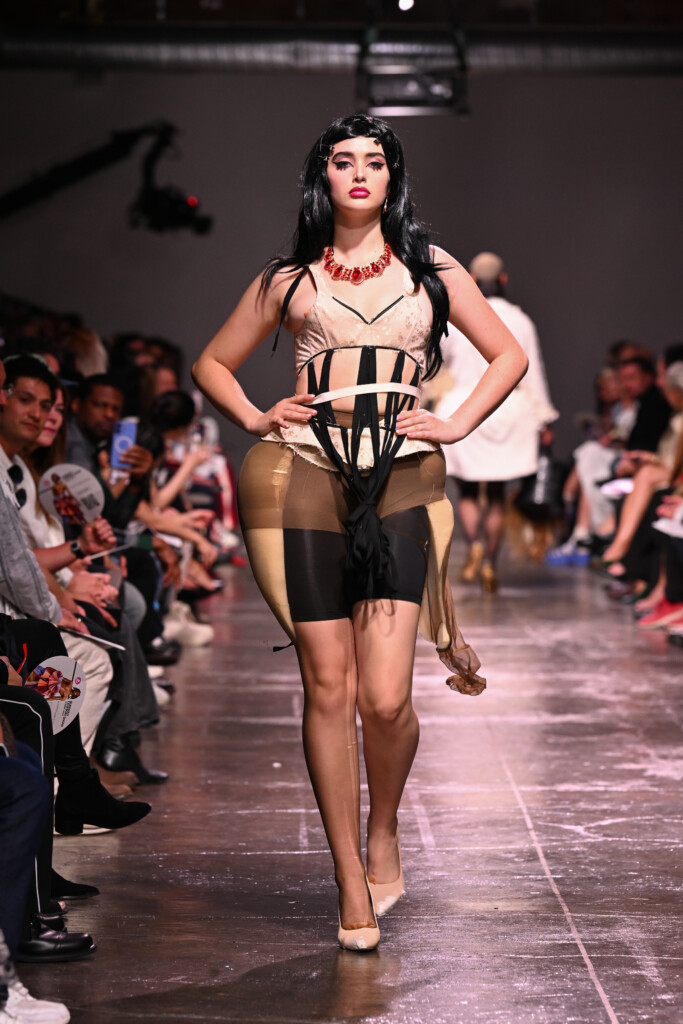
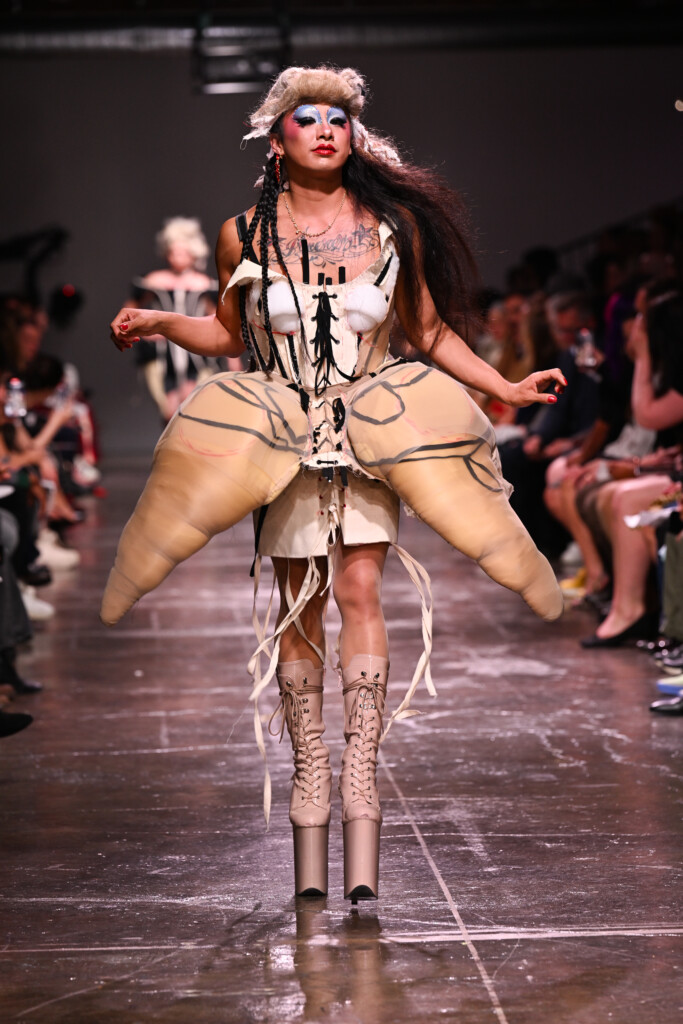
Words by Bea Pritchard, MA Fashion Journalism.
Runway photography by Ed Jay.
Conceptual Makeup Lead: Chelsea Mari Heintzman. Hair & Makeup Team Produced by Brandi Moore Agency. Lead Hair: Brittany Jordan. Lead Makeup: Lilia Christo-Ferrigno . Makeup Product: Morphe.

